-
Must restaurants serve you free tap water in France?
There are several rules surrounding beverages in French restaurants
-
Egg shortage in France: Where to find them and when they will return
Shortages are set to continue, with a minister blaming ‘restrictive laws’ on chicken coops
-
Eating alone at work in France: are attitudes changing?
Why the social taboo is being reconsidered in the modern workplace
From spit cake to elf shoes... a Tour de France by Christmas desserts
How many have you tried?
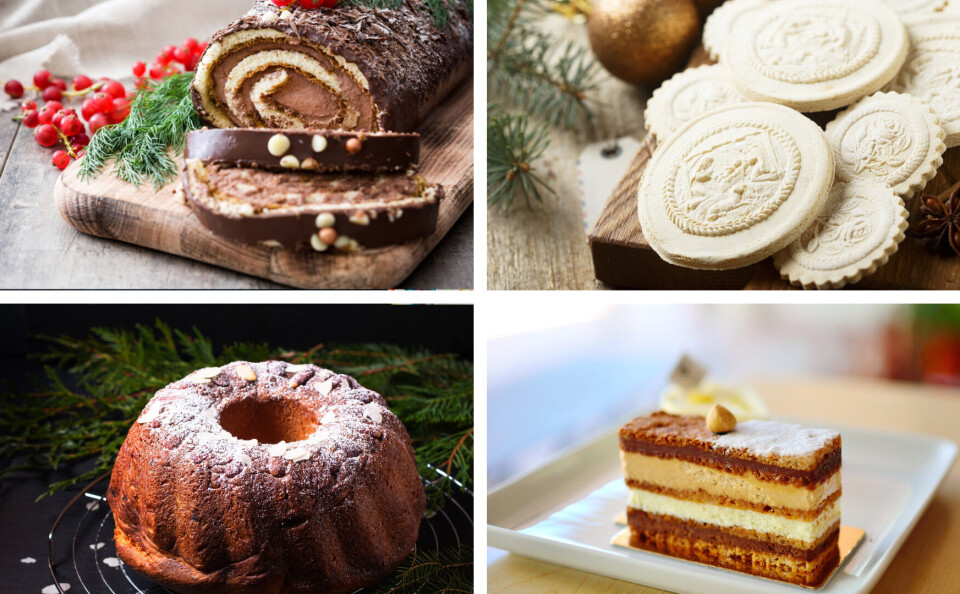
Every area of France has its own speciality when it comes to Christmas desserts.
We all know the Yuletide Log (bûche de Noël) but have we ever come face to face with the 13 dessert epiphanies of Provence? Or the spit cake of Aveyron? Or the elf shoes and magic slippers of Alsace?
The memorial power of cake has that Proustian capacity to conjure up the so-called ‘Madeleine Moment’ in a myriad of magical forms in just about every corner of France, the only country in the world which can list its cuisine as having Unesco World Heritage Status.
Small cakes and regional specialities are, we are told, coming back into vogue as chefs all over reach for traditional dishes to decorate the Christmas table.
Alsace is high up the list of pudding winners, with its mind-boggling number of winter creations (bredele, gingerbread, streusel, bettelmanns, dampfnudeln, langhopfs etc), closely followed closely by Provence and its aforementioned 13 Christmas desserts.
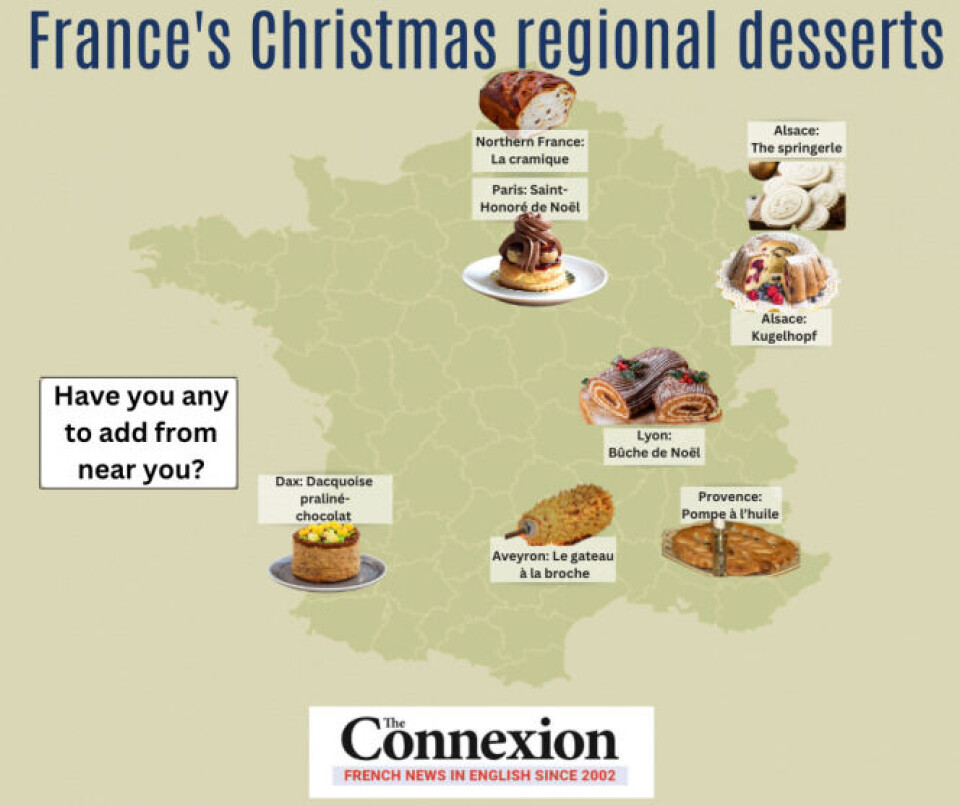
Pompe à l’huile - oil pump - Provence
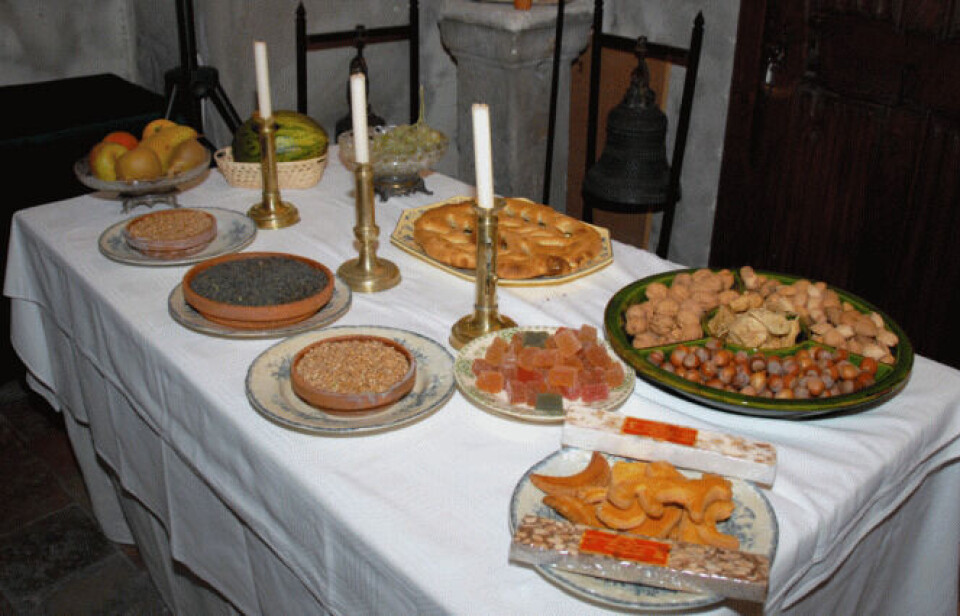
So let’s have a quick look at these Provençal offerings, the wonderfully named ‘pompe à huile’, which is currently back in fashion from Marseille to Nice. The pompe is a cheap date, though that sounds disrespectful given that it, like Christ, is surrounded by 12 apostles which should ideally accompany it.
The pompe à huile takes pride of place on the table and the 12 sweet acolytes include nougat, dates and chocolate discs topped with four dried fruits and candied citrus peels.
But the pompe itself is a queer sort of cake, a cousin of the fougasse and gibassié (Pronvençal breads), which is made of wheat flour, yeast, sugar, orange blossom and of course, olive oil. Today's cooks all have a novel twist as it is an infinitely variable and forgiving kind of dish.
Le gateau à la broche - the spit cake - Aveyron and Pyrenees

This giant cone-shaped dessert, which resembles an edible Christmas tree and whose recipe has been passed down from generation to generation, is made slowly, as liquid dough is carefully poured onto a spit rotating in front of the fire.
Well known in Hautes-Pyrénées and in Aveyron, it originally comes from Eastern Europe, and was very popular in Prussia, where Napoleon discovered it and brought it back to the Aubrac area of the Lozère.
It is also very popular in Germany, where the baumkuchen accompanies festive events, birthdays or weddings. Crunchy on the outside and soft on the inside, it is as delicious just after baking as it is when eaten a few days later.
The springerle - Alsace
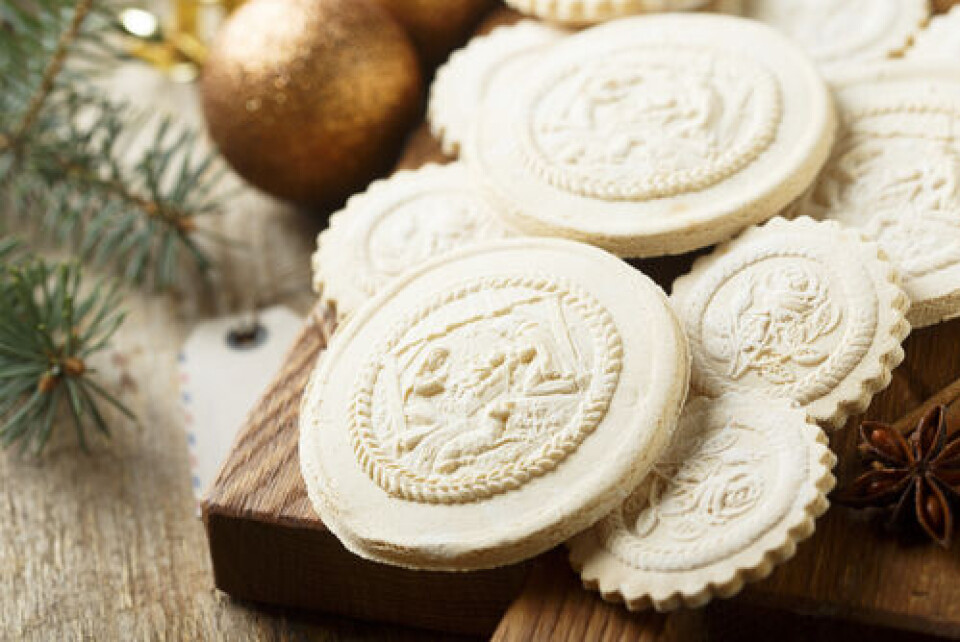
The springerle is a hard biscuit from Alsace, with a raised design. They are usually white and flavoured with anise and lemon zest.
Traditionally baked in a wooden mould, they are decorated with relief drawings, often with religious connotations, which give them the appearance of ancient engravings. Springerle also requires special attention: before baking, its dough must rest for 24 hours
Its origin is unknown but some of the moulds for the motifs date back to the early Middle Ages. The earliest designs were religious, with themes borrowed from holidays such as Christmas, Hanukkah and Easter. The name means ‘little riders’ in German.
They come from the bredele family of biscuits and cakes and are meant for celebrating the year’s end. Other members of this richly sweet group of holiday cakes include Santa Claus' beards, elf shoes and magic slippers.
Kugelhopf - Alsace
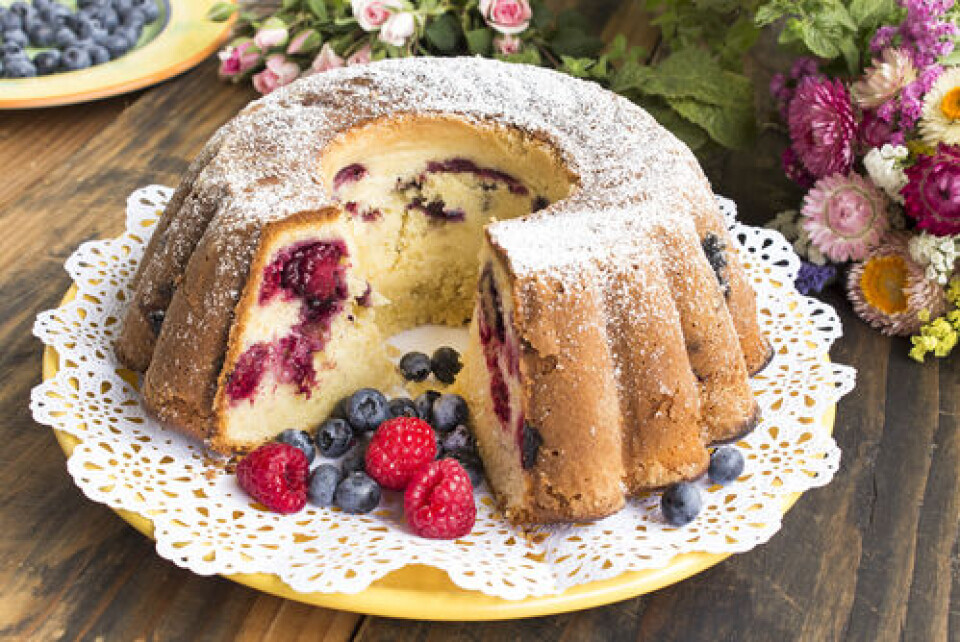
Similar to an Italian panettone (another Christmas tradition), the kugelhopf is traditionally served plain or laced with macerated raisins, and drizzled in a syrup made with orange, lemon (juice and zest), vanilla and rum, then dusted in powdered sugar.
Other versions may incorporate candied fruit, rum, slivered or powdered almonds, kirsch cherries, poppyseeds, or chocolate. At Christmas, extra decorations and colour are common.
The history of this simple yet popular cake starts in mediaeval Austria, where it was commonly served at large celebrations such as weddings, and adorned with flowers, fruits, or even candles.
Later, the Emperor Franz Joseph popularised it by featuring it at state events. Marie-Antoinette, who was a native of Austria, is also said to have loved the dessert.
Bakeries and specialist food stores in Alsace, Paris, and elsewhere in France generally sell this typical holiday treat in the weeks leading up to Christmas.
La cramique - raisin bread - Northern France
This speciality originating from Belgium is a plump brioche filled with raisins. It can be eaten for breakfast or as a snack, with butter, chocolate or jam. Or in a savoury version, on the festive table, grilled with foie gras.
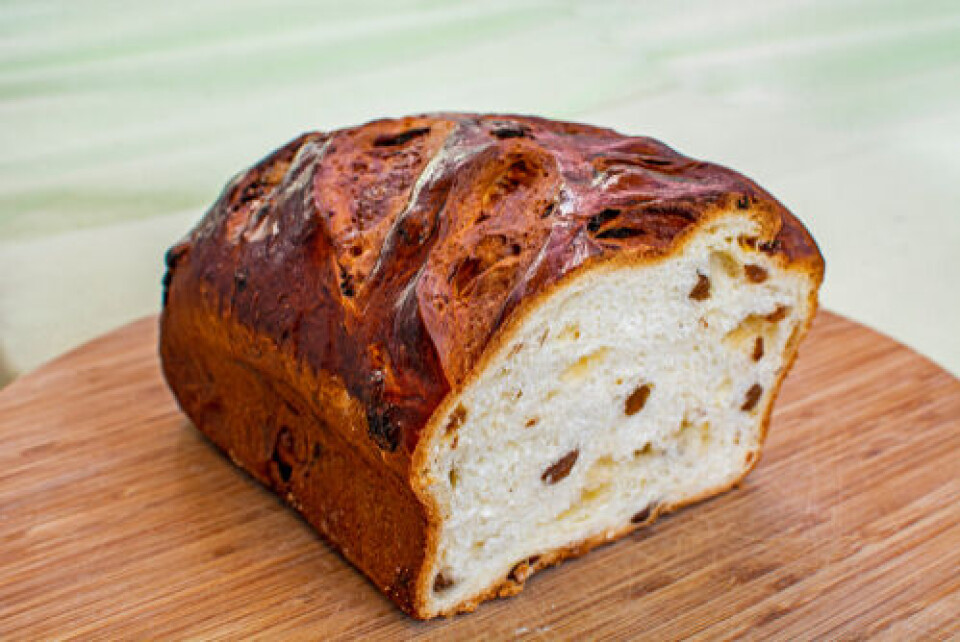
The stores Aux Merveilleux de Fred have decided to reinvent it by creating versions with pearl sugar and chocolate chips.
Bûche de Noël - Yuletide Log - Lyon
No list of French Christmas desserts would be complete without the most popular one of them all, the Christmas or Yuletide Log. While the bûche is now on festive tables in much of Europe and the UK, this elaborate and rolled sponge cake has origins in France.
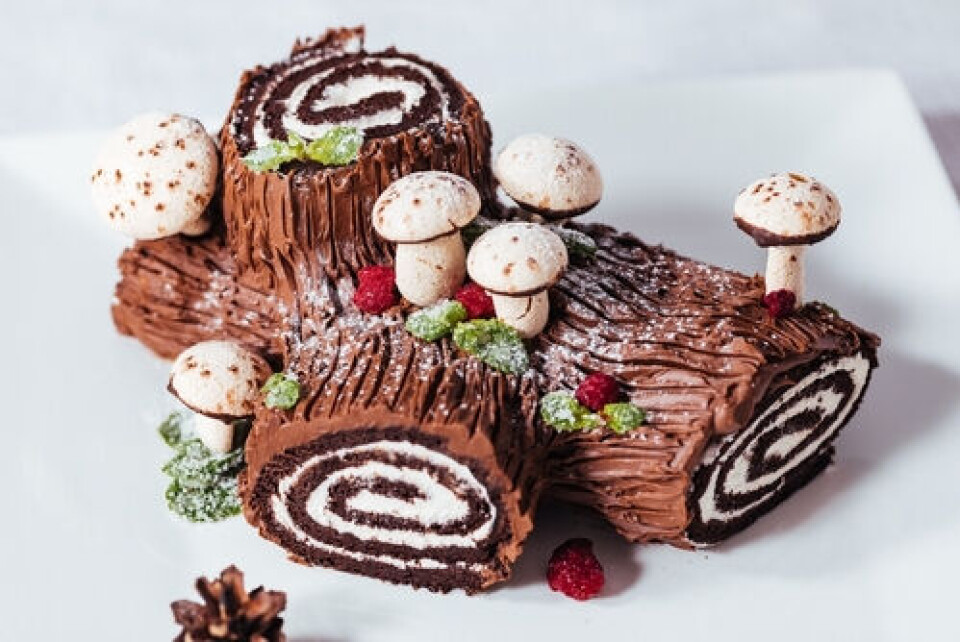
Though chocolate is the favourite as it most resembles a log and seems to be popular with most palates, you can find bûches in all sorts of flavours and guises, from vanilla to lemon, pistachio to chestnut and red fruits.
“Mushrooms crafted from marzipan or sugar, green branches or leaves (real or sugar-based), red berries, and other decorations are also common,” says the Paris Unlocked culinary website.
In the days before electricity there was a tradition of decorating, then lighting, an enormous wooden log on the longest night of the year.
Revellers would traditionally pour wine dregs, oil, salt and holy water on the log, hoping to ward off evil spirits or witches.
The Yuletide Log, like the Christmas tree, has its roots in pagan times, unlike the bûche, which seems to have been invented in the 19th century and has now become almost a culinary fashion statement.
Dacquoise praliné-chocolat - Dax, in the south west
The dacquoise is a cake from deepest south-west France, an area more famed for its foie gras and rich duck-centric cuisine.

The dacquois are the inhabitants of Dax, and the eponymous cake is made of two or three discs of almond meringue dough (sometimes mixed with hazelnuts, coconut, pistachios), separated by layers of differently flavoured buttercream.
The dacquoise base is a variant of the successful, halfway between meringue and macaroon pastry. Dacquoise bases are often combined with creams, mousses, ganaches or bavarois to give them a certain crunch. The Christmas variation includes mascarpone praline cream and the whole shebang is then dusted with powdered sugar.
The bottom of the dacqoise is a variant of the meringue succès, its dough being halfway between the dough or pate used for meringues and macaroons. It is easy to prepare, quick to execute and is both crunchy and melts-in-your mouth.
Saint-Honoré de Noël - Paris
Fans of choux should try this recipe from the Journal des Femmes for a special Christmas variation on the famous Saint Honoré pastry dish. A chocolate madeleine with a shortcrust or shortbread base, a mandarin confit for the fondant, topped with a positively crunchy caramelised choux.
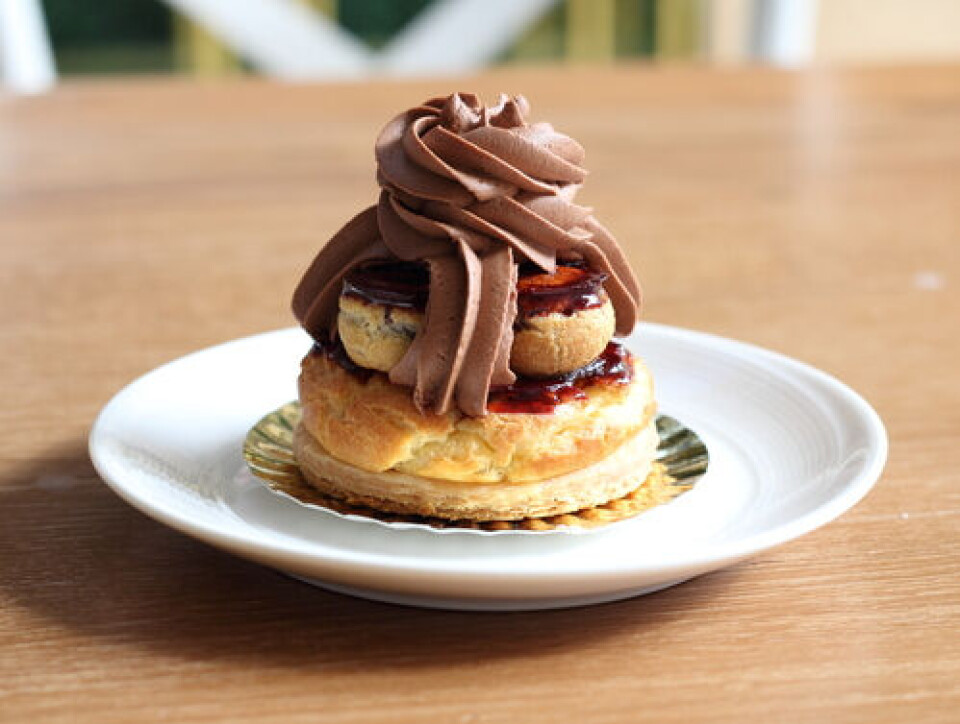
According to pastry chefs Pierre Lacam and Antoine Charabot, the Saint-Honoré was created by the Parisian pastry chef Chiboust in 1840, inspired by a Bordeaux dessert called ‘flan suisse’.
He named his cake after the rue Saint-Honoré, where his business was located. But by coincidence it also pays tribute to Saint Honoré, the eighth bishop of Amiens who also happens to be the patron saint of bakers.
The rue Saint-Honoré is one of Paris’s main culinary arteries, stretching nearly two kilometres from Les Halles, the ancient ventre (belly) of Paris to rue Royale, via the Louvre, the Place Vendôme and Place de la Madeleine, after which another famous cake takes its name.
The base of the traditional Saint-Honoré is filled with choux pastry before baking. It is then covered with pastry cream and, if you're making the larger variety, its perimeter is studded with small choux filled with the same cream.
It is then topped with caramel, chocolate or jam. The cake is finished by filling its centre with a simple whipped cream, or the more complicated crème Saint-Honoré, which incorporates egg white applied with a special seamless stainless steel saint-honoré nozzle.
Where can you find them?
Below are some examples of shops where you will find the desserts listed above.
Pompe à l’huile: Suzanne et Lucien, 28, avenue Émile-Cossonneau, Noisy-le-Grand (93). Spit cakes (gateau à la broche) Maison Alibert, Millau (12). Maisonalibert.com
Le gateau à la broche: Maison Alibert, Millau (12). maisonalibert.com
Springerle: "L'Extraordinaire Noël des pâtissiers", Christophe Felder and Camille Lesecq, La Martinière, 35 euros, or in the book “L’Extraordinaire Noël des pâtissiers,” by Christophe Felder et Camille Lesecq. christophe-felder.com
La Cramique: Aux Merveilleux de Fred, auxmerveilleux.com
Kugelhopf: Galeries Lafayette or the Grande Epicerie at the Bon Marché in Paris, or the baker Yann Couvreur. Or the Epicurious recipe. Or again christophe-felder.com.
Bûche de Noël: All supermarkets, though better trying an artisanal bakery. Or bake your own following Mary Berry’s recipe or the more complicated one of the great Anglo-French chef Raymond Blanc.
Dacquoise: Any good patisserie in the South West, particularly Dax. Or any of Christophe Michalak’s outlets in Paris. Here’s a recipe from Cuisine Actuelle.
Saint-Honoré de Noël: This rather demanding Christmas variation on the Saint-Honoré theme was dreamt up by the famous Breton patissier Maëlig Georgelin for the cook shop Guy Demarle. To buy: any Ladurée outlet. Or the Maison Saint-Honoré, 28 Bd du Cabot, 13009 Marseille.
Related articles
‘Mettre la main à la pâte’ - a hardworking French expression
Aix-en-Provence: the refined city full of French Christmas tradition
How to choose French wines to match classic British Christmas food
























